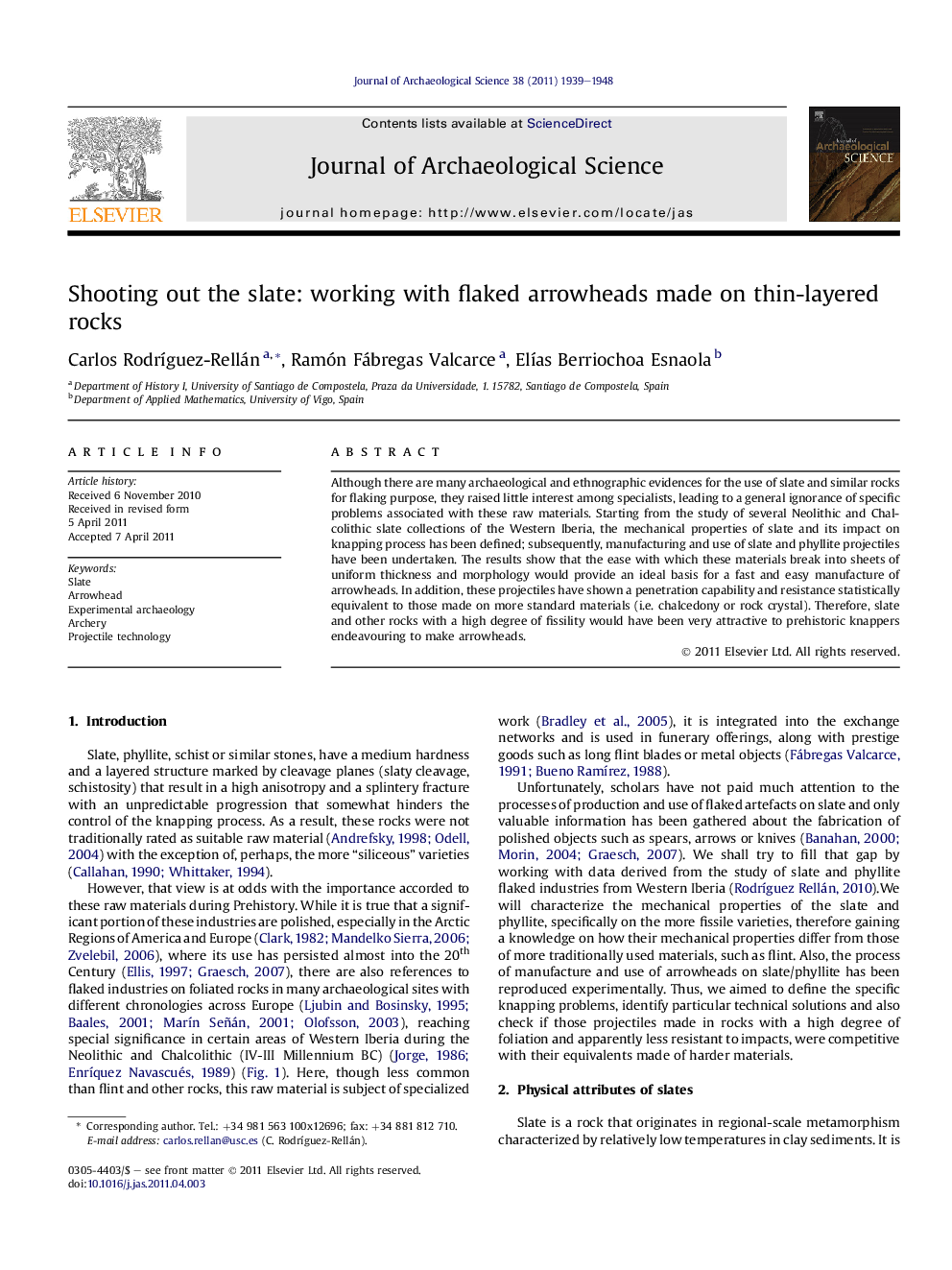| Article ID | Journal | Published Year | Pages | File Type |
|---|---|---|---|---|
| 1035825 | Journal of Archaeological Science | 2011 | 10 Pages |
Although there are many archaeological and ethnographic evidences for the use of slate and similar rocks for flaking purpose, they raised little interest among specialists, leading to a general ignorance of specific problems associated with these raw materials. Starting from the study of several Neolithic and Chalcolithic slate collections of the Western Iberia, the mechanical properties of slate and its impact on knapping process has been defined; subsequently, manufacturing and use of slate and phyllite projectiles have been undertaken. The results show that the ease with which these materials break into sheets of uniform thickness and morphology would provide an ideal basis for a fast and easy manufacture of arrowheads. In addition, these projectiles have shown a penetration capability and resistance statistically equivalent to those made on more standard materials (i.e. chalcedony or rock crystal). Therefore, slate and other rocks with a high degree of fissility would have been very attractive to prehistoric knappers endeavouring to make arrowheads.
► Slate has been used with intensity in certain areas of Europe during prehistory. ► Lithic industries on slate and phyllite have been largely ignored by the specialists. ► The fissility of slate easily provides suitable blanks for making arrowheads. ► The projectile manufacture is easier and faster on slate than on other raw materials. ► The slate and phyllite arrowheads are competitive with those made on other rocks.
